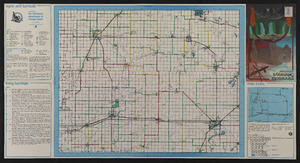Transportation-based classifications of Minnesota's counties and metropolitan statistical area tracts using measures from the 1990 Census of Population and Housing: Final Report
Date Created
1994
Report Number
94-25
Description
Accident Analysis of Significant Crash Rates for Low to Very Low Volume Roadways in 10 Minnesota Counties
Date Created
2004
Report Number
2004-22
Description






